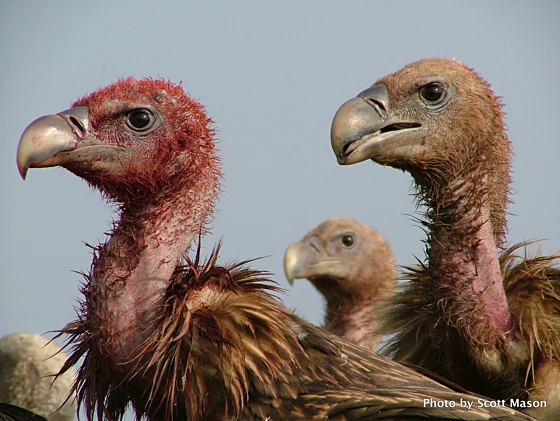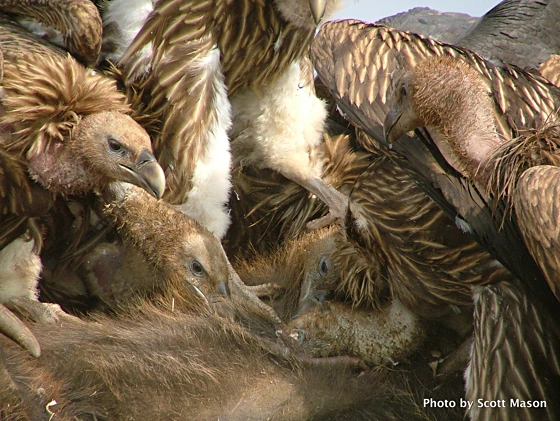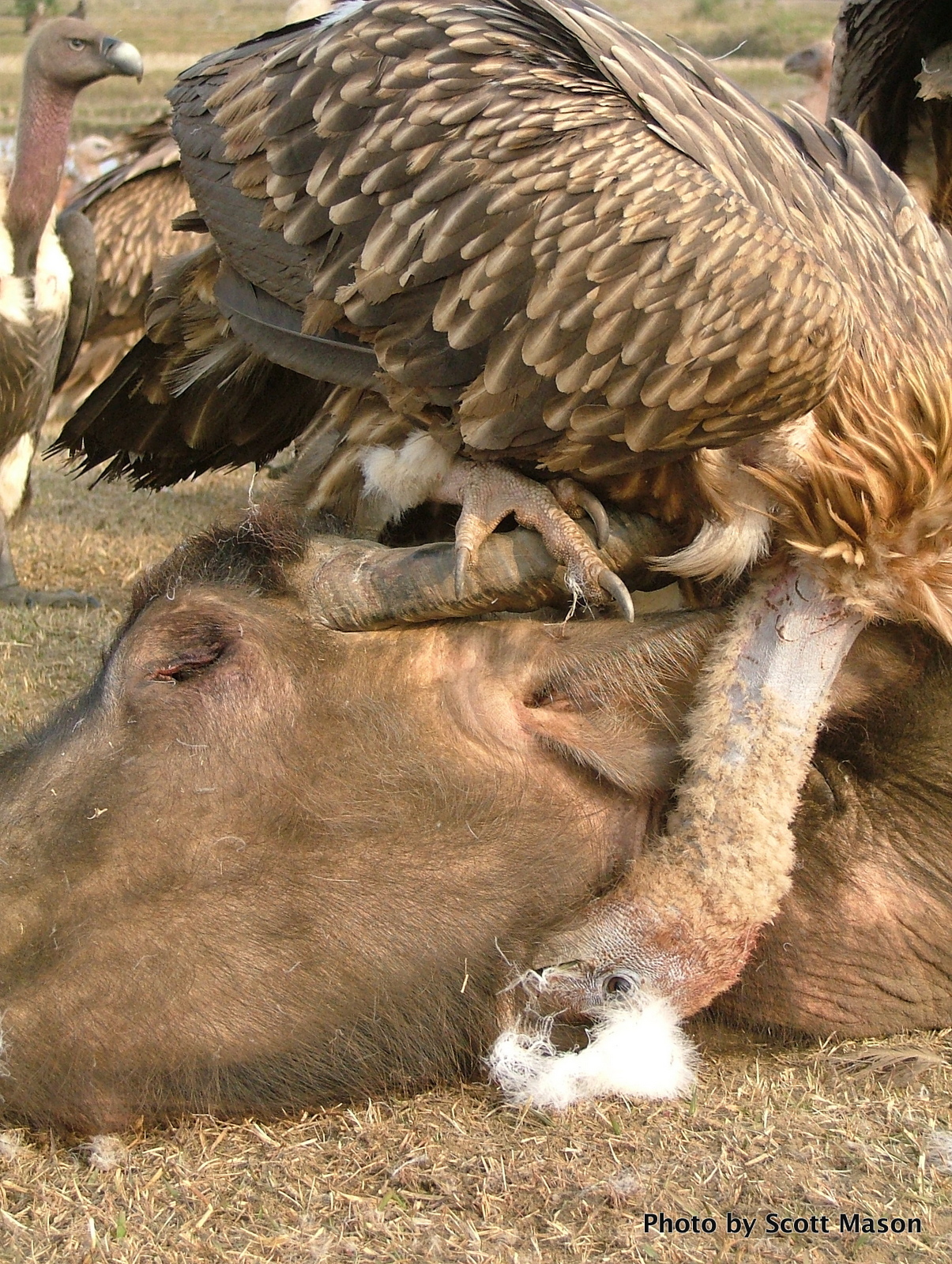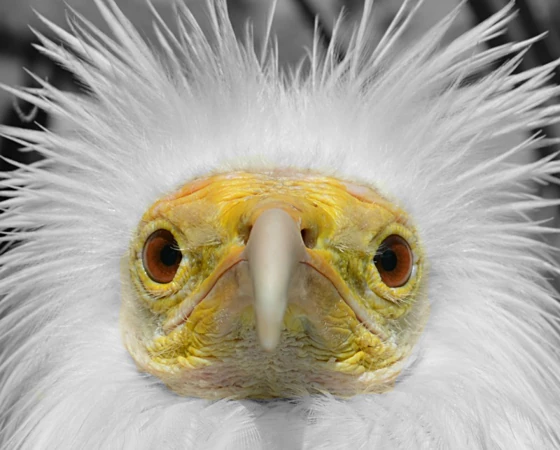I love birds. In particular, I love vultures. Vultures are obnoxious, messy, noisy and greedy. Just like tantrikas.

They are also cautious, careful, alert, and unafraid to stick their heads into a jugular. Some tantrikas possess these qualities too.
Vultures dive into the remains of life, the mess and the discards, and clear it up. Once they have an eating project in mind, they’re cooperative and focused.

They will wait for days before beginning a feast, but once they start, it takes a significant threat to divert their attention. And they will continue until the bones are bare. It is not in the nature of vultures to leave a mess behind.


Not only do vultures perform a valuable ecological function, but they also party while they’re at it. They become so satiated by the experience that they cannot fly.
For Tibetans, vultures also provide a social function. The natural funeral for a Tibetan at high altitude is a ‘sky burial.’ The ground is too hard for interment, there are no deep rivers for ritual cleansing and convenient corpse removal, and there are no trees to provide wood for cremation. Burial takes place in the air; vultures stand in for the elements of the Earth, transforming the corpse to a skeleton.
When I looked for a video of a sky burial on YouTube, the most popular one was David Attenborough’s account: “Tibetan Sky Burial.” It has beautiful cinematography, amazing images of flying vultures and mountain scenery, and intimate details of Tibetans preparing for ritual. It has gravitas and I recommend it as a feast for the senses. However, it doesn’t include images of the crucial part of the sky burial – the vultures waiting and then preying on the human corpse. Maybe it was cleaned up so as to be palatable for more viewers.
I found a video on YouTube that included a sequence of still images from a sky burial, graphic stills, in which a live human chopped up a dead one. After the vultures had eaten the corpse to the bones, the ‘ro rgyab pa,’ the body-breaking corpse-carrying man — an outcast in Asian society — kindly chopped up the remains to make them more accessible for the vultures. Unlike in David Attenborough’s beautiful work of art, there was no romantic music.
That video has since been removed from Youtube. It was simple and not less disturbing to watch than some that are now available. Additionally, since I first wrote this post in 2013, sky burial has become a tourist activity in Tibet. YouTube videos now include tourists and locals filming the burials on their smartphones. In place of that video here is a different one. Please be warned, it has some very graphic images of the process and has age restrictions. I do not recommend it unless you actively want to evoke your disgust-horror response today. It also has some fabulous video footage of the wake of vultures.1
Death, decay and transformation
Vultures are fearless around death. They thrive on it. But they are in serious danger of extinction. Since 1990 more than 95% of vulture populations in India have died – tens of millions of vultures.2 Their decline results from exposure to diclofenac, a veterinary drug present in the livestock carcasses they scavenge. Without vultures’ reliable efficiency, rabies and other diseases are rising as pathogens are transferred to feral dogs who step in to scavenge for meat.3 The RSPB is working with local conservation organizations in India and Nepal to help prevent Asian vultures from becoming extinct within ten years.4
It is revealing that the most popular contemporary account of a sky burial on YouTube is sanitized to include everything except the thing itself. The encounter with death is turned into a beautiful, aesthetic, romantic ritual. You don’t get close up with death and decay in Attenborough’s video. It is too shocking. But you can nonetheless encounter death vicariously through the ritual portrayed. You have some exposure to the reality of what happens while watching the sunset. It is quite appealing; it might even make you want to go there on holiday.
Death, decay and transformation are central themes in Vajrayana. Indeed, mortality salience is central to most Buddhisms. Many presentations are possible and suitable for different contexts and participants. Personally, I prefer the un-romanticized, up-close-and-personal approach. Tantrikas tend to want to leave no bone unturned. Tantra is not nice.
Vultures in tantric practice
I first got to know vultures personally on a trip to Nepal. I was there for a couple of months and the pollution in Kathmandu was bad, so I bailed out to Pokhara for a spontaneous retreat. I stayed in a hut in Maya Devi village. Afterwards, I met Scott Mason and his parahawking5 team, including Kevin:

Kevin is an Egyptian vulture. He was knocked out of the nest as a chick but saved from death by Scott and his friends. He was one of 5 birds on the parahawking team. I flew with him and another time with his mate Bob.
I already had an association with vultures before meeting Kevin and Bob, through the animals connected to the elements in Tantra. The elements in the Tibetan Buddhist system are earth, water, fire, air and space. In Vajrayana, they are associated with the five Buddha families. Practices related to the five families transform neurotic behaviour into useful action.6 In some systems, the vulture is associated with the water element and the liberation of anger into clarity.
Recently I acquired some Flector™ prescription pads for sciatic injury with instructions to stick them over the painful areas. They are large: about 6 by 4 inches. Being a tantrika, I opened the whole box and covered as much of my hip joint and posterior chain as I could with this second skin.
I didn’t think to check the ingredients in the Flector™ pads. My boyfriend was reading the small print while I was getting all excited about my new skin. It turned out that the active ingredient was diclofenac.
I hereby issue a health and safety warning to tantrikas:
Flector™ skin patches are all full of diclofenac and UNDER NO CIRCUMSTANCES take part in your own sky burial after using them. Think of the vultures.
Questions for readers:
Do you know of Tibetan Buddhist lineages that associate animals with the elements, or with other practices?
Does anyone know if there is a Tibetan name for the men who carry out and carve up the corpse for a sky burial? I used the word ‘undertaker’ because I couldn’t think of a better word. Knowing the Tibetan would probably make for a better translation. (Edit: thanks to the commenters who helped answer this question. I changed the post text accordingly.)
Postscript: A big thank you to Scott Mason for readily sharing his photos, for advice on the vulture crisis and for his contribution to maintaining Nepalese diclofenac free vulture restaurants.
- 1.‘Wake’ is the collective term for vultures attending a funeral
- 2.Prakash V, Pain D.J, Cunningham A.A, Donald P.F, Prakash N, Verma A, Gargi R, Sivakumar S, Rahmani A.R. Catastrophic collapse of Indian white-backed Gyps bengalensis and long-billed Gyps indicus vulture populations. Biol. Conserv. 2003;109:381–390.
- 3.‘Rabies tragedy follows loss of India’s vultures,’ by Matt Walker 12th August 2008, New Scientist.
- 4. I recommend following the link to the RSPB page on the vulture crisis in Asia. There’s an excellent 16 minute video there, and an option to donate to their work with vultures. This video is an edited cow corpse feed from start to finish, with a superimposed account of the severity of the Asian vulture crisis. Watching a real feed from start to end takes hours, sometimes a full day.
- 5. Parahawking combines falconry with paragliding. Birds of prey work together with paragliders, guiding them to thermals.
- 6.If you would like to learn more about tantric practice in relation to the Buddha families, there is a 1hr 15 minute video of Chögyam Trungpa Rinpoche in 1974 talking on Tantric practice and the five Buddha families here.
